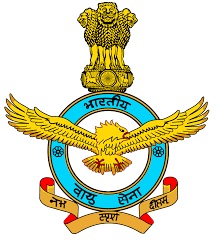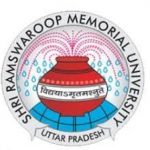
| Department | Indian Air Force [IAF], CDAC |
| Exam | The Air Force Common Admission Test [AFCAT] |
| Download | Syllabus |
| Document Type | |
| Official Website | https://afcat.cdac.in/AFCAT/ |
AFCAT & EKT Syllabus
The Air Force Common Admission Test (AFCAT) is conducted by the Indian Air Force. The exam is held twice a year in February and August/September, respectively, to select Class-I Gazetted Officers in Flying and Ground Duties (Technical and Non-Technical).
Download AFCAT Syllabus 2021
| AFCAT Syllabus | Download Here |
AFCAT Syllabus 2021
Air Force Common Admission Test (AFCAT): The AFCAT Question Paper will have 100 questions. The total time allotted for the paper is two hours. Each Question Paper will have questions from the following topics:-
(a) English : Comprehension, Error Detection, Sentence Completion/Filling in of correct word, Synonyms, Antonyms and Testing of Vocabulary, Idioms and Phrases
(b) General Awareness : History, Geography, Civics, Politics, Current Affairs, Environment, Basic Science, Defence, Art, Culture, Sports, etc
(c) Numerical Ability : Decimal Fraction, Time & Work, Average, Profit & Loss, Percentage, Ratio & Proportion and Simple Interest, Time & Distance (Trains/Boats & Streams)
(d) Reasoning and Military Aptitude Test : Verbal Skills and Spatial Ability
EKT:
The EKT Question Paper will have 50 questions. The total time allotted for the paper is forty five minutes.
Syllabus For Computer Science Engineering
Fundamental Engineering:
1. Engineering Mathematics:
Matrix Algebra, Eigen values and Eigen vectors, Theorems of integral calculus, Partial derivatives, Maxima and minima, Multiple integrals, Stokes, Gauss and Green’s theorems. First order differential equation (linear and nonlinear), Cauchy’s and Euler’s equations, Complex variables, Taylor’s and Laurent’ series, Sampling theorems, Mean, Median, Mode and Standard deviation, Random variables, Discrete and Continuous distributions, Fourier transform, Laplace transform, Ztransform.
2. Engineering Physics:
Units for measurement, Description of Motion in One, Two and Three dimensions, Laws of Motion, Work, Energy and Power, Rotational Motion, Gravitation, Heat and Thermodynamics, Electrostatics, Electric Current, Magnetic Effect of Currents, Magnetism, Electromagnetic Induction and Alternating Currents and Electromagnetic Waves, Ray Optics and Optical Instruments.
3. Engineering Drawing:
Projection of straight line, planes and solids, Intersection of surfaces, Isometric Projection, Sectional Views of solids, Full section, Introduction to ComputerAided Drafting.
Specialisation Branch Topics:
4. Analog and Digital Electronics:
Characteristics of diodes, BJT, FET, JFET and MOSFET, Amplifiers – biasing, equivalent circuit and frequency response, Oscillators and feedback amplifiers, Operational amplifiers – characteristics and applications, Simple active filters, VCOs and timers, Combinational and sequential logic circuits, Multiplexer, Schmitt trigger, Multi-vibrators, Sample and hold circuits, A/D and D/A converters, 8-bit microprocessor basics, architecture, programming and interfacing.
5. Electronic Devices:
Energy bands in Silicon, Intrinsic and extrinsic Silicon, Carrier transport in Silicon – diffusion current, drift current, mobility, and resistivity. Generation and recombination of carriers, p-n junction diode, Zener diode, tunnel diode, BJT, JFET, MOS capacitor, MOSFET, LED, PIN and avalanche photo diode, Basics of LASER.
6. Computer Networks:
ISO/OSI stack, LAN technologies (Ethernet, Token ring), Flow and error control techniques, Congestion control, TCP/UDP and sockets, IPv4, Application layer protocols (icmp, dns, smtp, pop, ftp, http), Basic concepts of hubs, switches, gateways, and routers. Network security – basic concepts of public key and private key cryptography, digital signature, firewalls. Basic concepts of client-server computing.
7. Network Theory Design:
Thevenin’s, Norton’s, Reciprocity, Superposition, Compensation, Miller’s, Tellegen’s and Maximum power transfer theorems. Impulse, step, ramp and sinusoidal response analysis of first order and second order circuits. Two port parameters and their interrelations, Application of Laplace transform and Fourier series in the context of network analysis, Network synthesis.
Have a question? Please feel free to reach out by leaving a comment below
![Indian School Talent Search [ISTSE] Olympiad Exam 2021-22 Syllabus ISTSE-Logo](https://www.recruitmentzones.in/wp-content/uploads/2021/08/ISTSE-Logo-150x150.jpg)

